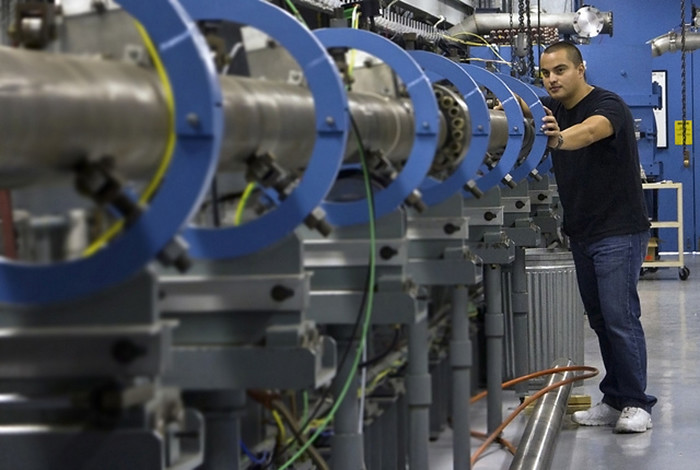From Los Alamos summer student to Lab scientist

Sanchez encourages students in all disciplines to look for jobs at the Lab. “Los Alamos works on a variety of projects that utilize skill sets from almost all degree programs,” he says. “Chances are you can find something you enjoy.”
In 2013, Chimayo native and Pojoaque High School graduate Nate Sanchez earned a PhD in mechanical engineering at Washington State University (WSU). From there, he could have launched his career anywhere in the world. He chose to return to Northern New Mexico.
“Los Alamos has always been recognized as a top employer that offers a broad spectrum of jobs,” he says. “I knew that was where I wanted to work since high school.”
During high school, Sanchez worked as a Los Alamos summer student in acquisition services. “I delivered packages throughout the Laboratory,” he remembers. “I was always amazed by the science laboratories, so I requested tours from the scientists and became hooked on science.
As an undergraduate at the University of New Mexico, Sanchez returned to Los Alamos for the summers, working in the sub-atomic physics group. “We conducted dynamic experiments involving high explosives,” he says. “From that moment on, I knew I wanted to work in the high explosives science field.”
After graduating from UNM in 2010, Sanchez decided to enroll in a PhD program—specifically one that would allow him to continue his Los Alamos research in a university setting. “At the time, there was a Laboratory Directed Research & Development (LDRD) Program in understanding metal behavior in extreme environments,” says Sanchez, noting that there was also a professor, Dave Field, at WSU who specialized in electron backscatter diffraction. “The goal was to have a multidisciplinary approach where shock physics expertise at LANL was coupled with Dave Field’s expertise in metallography.”
For two years, Sanchez completed coursework at WSU, routinely flying back to New Mexico to conduct dynamic experiments and recover samples at Los Alamos.
Not surprisingly, Sanchez was offered a post-doc position at the Lab after completing his PhD in 2013. But when National Nuclear Security Administration (NNSA) offered him a job at its headquarters in Washington, D.C., the detonator technology group at Los Alamos was able to counter that offer and offered Sanchez a full-time job.
“Today I am a Product Realization Team lead for the detonators on the B61 Mod 12 Life Extension Program,” he says. “I am excited to go to work every day as we continue to work on evolving technical challenges on national security. The skill sets that I’ve acquired while working on complex projects and from my peers is difficult to obtain elsewhere.”
Sanchez is quick to acknowledge his mentors as well. “To this day I still have several mentors who help me improve continuously, and I plan on having a mentor throughout my career here at Los Alamos,” he says. And because he’s been full time for three years, Sanchez is now a mentor himself. “It is exciting to mentor the next generation of scientists," he says. "They bring in a new level of excitement by approaching technical challenges in a different manner.”






